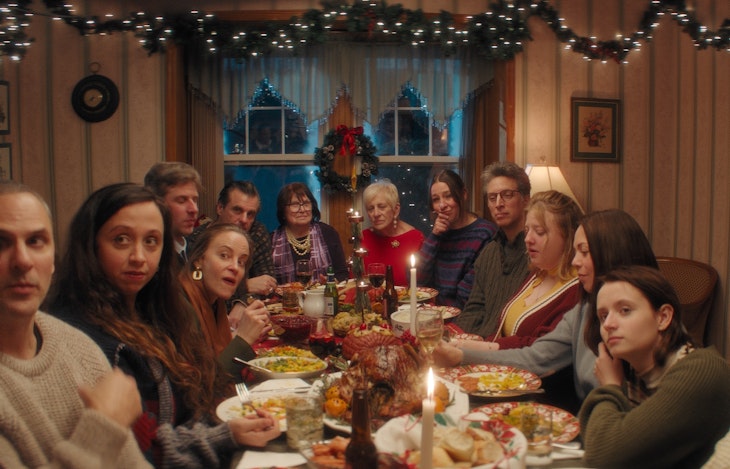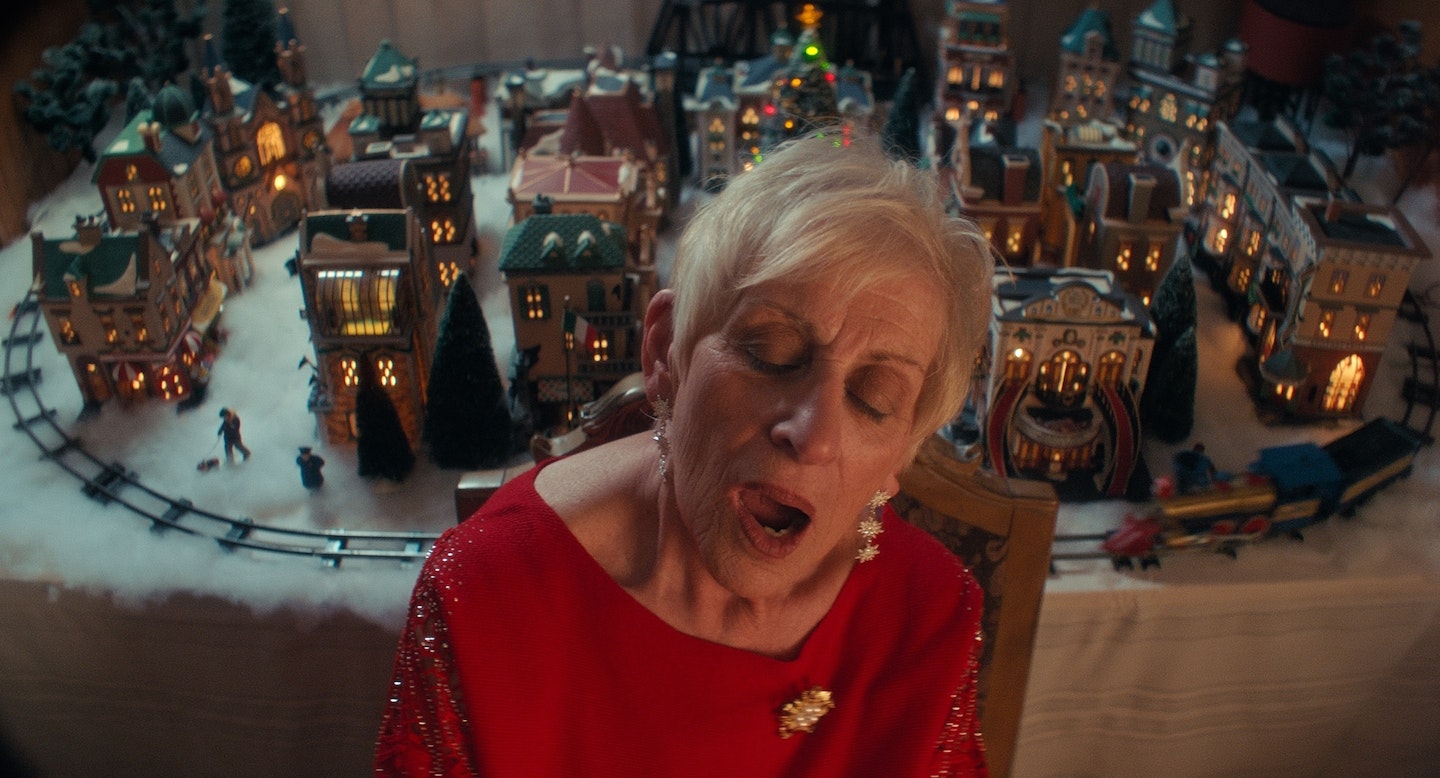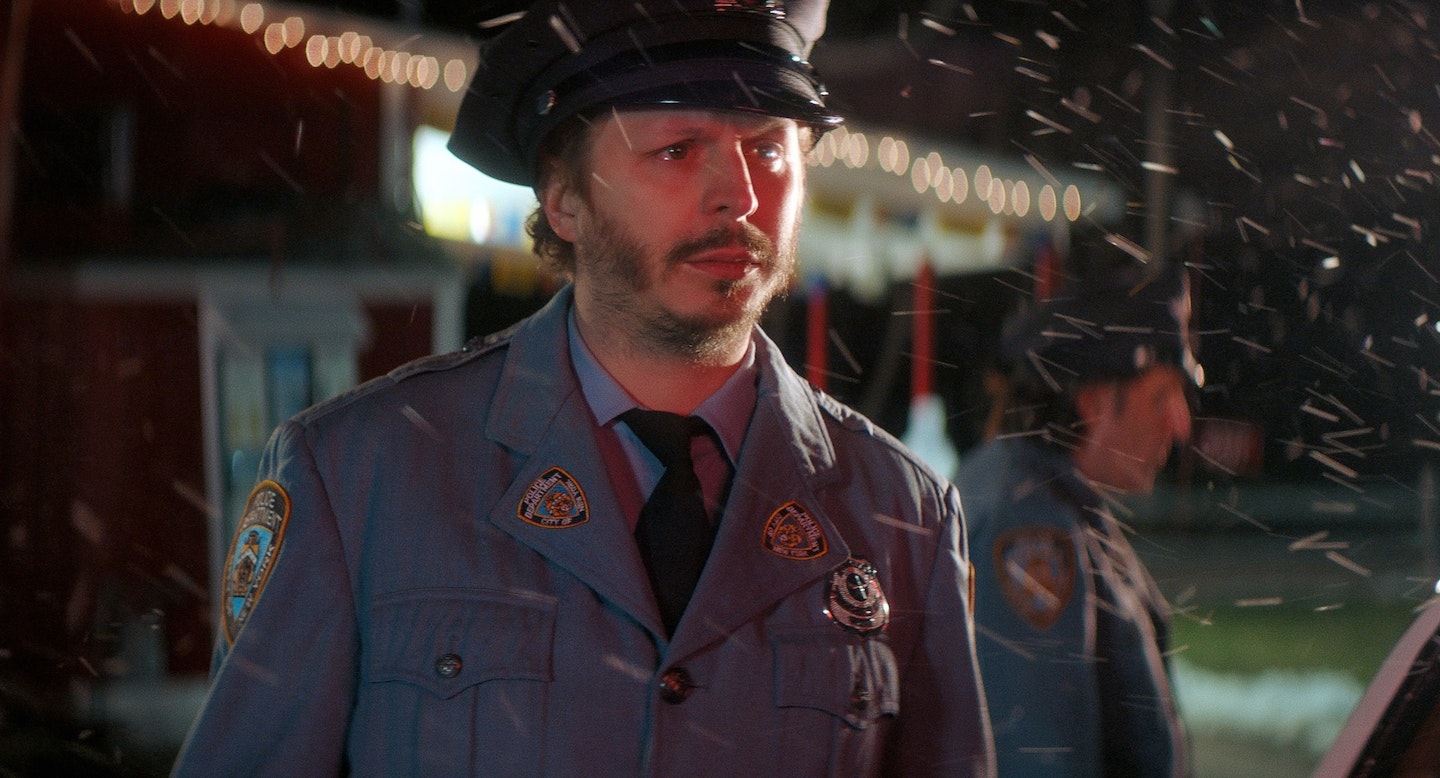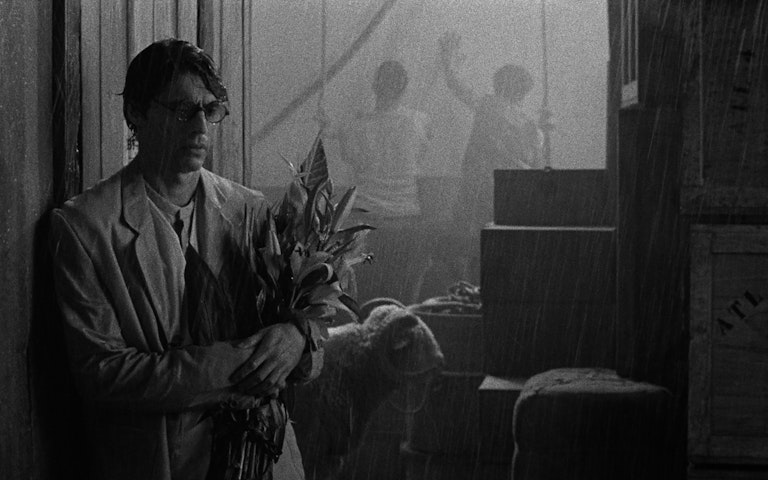Young Critics reviews: Christmas Eve in Miller's Point

Review by Ana Đošev
In good times and bad, in sickness and in health, kitsch has always been nostalgia’s best mate. Framing it with flower crowns and linen sheets, artists trying to seize the past is a tale as old as time. In Christmas Eve at Miller’s Point, Tyler Taormina plays with nostalgic clichés in the neon holiday setting of a populous middle class Italian American family household. With a whole host of in-your-face characters, the story deals with events over the course of one Christmas Eve.
Right in front of our eyes, the director turns Proust’s madeleine into a whole feast of yuletide nibbles, homely décor and peculiar folks. What unravels is a glittery suburban paradise, filled with joy and intrigue alike—they eat, sing, eat, gossip, drink, fight, eat and eat again. The camera’s tipsy-turvy angles capture the get-together with a positional unspontaneity to portray the familial (dis)comfort, clinging onto shots of a senile senior’s snoring or the oh-so-retro bathroom interior. This visual pastiche lets the film get away with the whimsical and directionless plotline. The household frenzy is supported by a profound auditory awareness, layering the clinging of silverware on top of complex conversational polyphonies and festive tunes.
This and similar glimpses of genius more often than not get overshadowed by a multitude of Hollywood tropes, making Christmas Eve at Miller’s Point seem common place rather than parodical. As Taormina puts one too many sugar cubes in his cinematic eggnog, he seems to lose himself in the sweetness of idealized childhood memorabilia. Somewhere along the path to the filmmaker’s Little Italy, though, the viewer will also find the Rorschach projection of his own sentimental escapades, making up for at least a few of the film’s cardinal sins.

Review by Emily Jisoo Bowles
Watching Christmas Eve in Miller’s Point is like talking to someone who’s a bit too into the festive season. They count down the days before they can put up the tree, their saccharine anticipation starting to cloy in your throat. While Tyler Taormina’s third feature doesn’t sicken, its unwavering belief in the magic of yuletide doesn’t quite have the panache to pull off its sentimental sincerity.
Revolving around an Italian American family’s holiday reunion, the house door swings open to catalyse a dizzying montage of greeting, squealing, and so good to see yous. The scene culminates in a bizarre sequence from a child’s POV, cornered by sticky lipstick-laden smooches from two grandmas while the third looms in the distance with the threat of more. The film punctuates its festive cheer with these hints of discomfort, gesturing towards the loving suffocation of family and the awkwardness that lurks just under the bauble-shiny surface.
For much of the runtime, the camera hops like an undiscerning flea from character to character, doggedly committed to portraying every family member’s eccentricity to the point of exasperation. Even the ratty dog has its own POV shot, as it gazes out the window to lock eyes with a deer. In its efforts to convey the magic of the season while still coming off as cool and quirky, Christmas in Miller’s Point feels at times like a particularly creative Xmas advert, one that drags despite its frenetic energy.

Review by Marina Zigneli
Like something straight out of a VHS collection gathering dust in a family’s attic, Tyler Taormina’s latest film, Christmas Eve in Miller’s Point, warmly captures the Christmas get-together of an Italian American family in the suburbs.
The twinkling lights, the festive soundtrack, and the overlapping conversations drifting in from different corners of the house, all merge to create a sensory overload in accordance with most holiday gatherings you’ve watched on the big screen or experienced in real life. Taormina’s regular collaborator and cinematographer Carson Lund assumes the role of that annoying dad or uncle at annual Christmas dinners, determined to capture the whirlwind of chaos that erupts once the doors swing open and relatives pour into every corner of the Balsano household. And while the film struggles with coherence, leaving most of its early subplots underdeveloped, it makes up for it with its elaborate production design, ranging from fancy Christmas decorations all the way through to the carefully selected green and red M&Ms, and a character-driven narrative that unfolds in a way that leaves little time to ponder what might happen to all of them the morning after.
Very much aware of the holiday movie tropes and the nostalgia-soaked Coca-Cola Christmas commercials, Taormina lets the thrill felt by the kids as they race down the stairs to unwrap their presents echo through Christmas Eve in Miller’s Point. By the end of the film, the initial sense of exaggeration has finally sunk in leaving behind a Christmas dinner that reflects the complexities of a family reuniting once a year—a delightful memory for some or a burdensome obligation for others.

Review by Theo Du
It is not that Christmas Eve in Miller's Point only restages familiar clichés. As the title indicates, we follow the drama and hijinks of an extended family reunited over Christmas dinner. There are undercurrents of experimentation below the skin of the image. The film opens with a darkened car-tracking shot of the American suburbia manifested only through their dazzling light decors. It is evocative and mesmerizing, effectively conjuring the inherent liminality of the holiday season. The movement of the camera perfectly masks a subtle cut to a flipped image, houses now swishing by us, toppled over in their luminescent skeleton. Only for the scene to cut anxiously to a boy sitting in a car with his head craned back towards the window.
There is a constant refusal to stay with all of the 'non-standard' visuals that are clearly executed with intention and care: the impressionistic light streaks of the fire brigade march reminiscent of the American avant-garde, or the dolly into the VHS home footage on the tube tv. This seeming anxiety of not letting any ambiguity speak for itself permeates throughout the film. None of the overly zealous and larger than life family members are ever properly fleshed out.
A cast credit sequence a la Full House concludes the film, with a cheery photo of the production crew. It is not that Christmas Eve in Miller's Point contains nothing but sickly sentimentalism, but it does exude an undeniable acrid scent: the flavor of unabashed uncritical sincerity.


